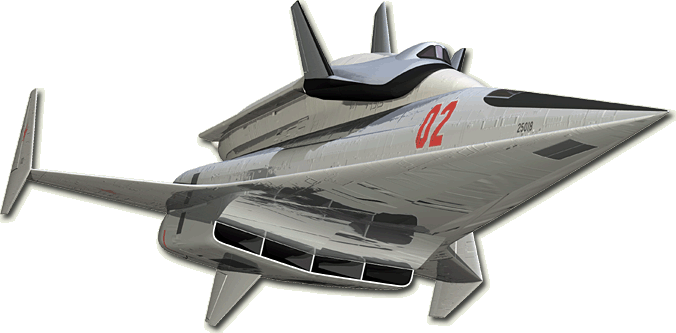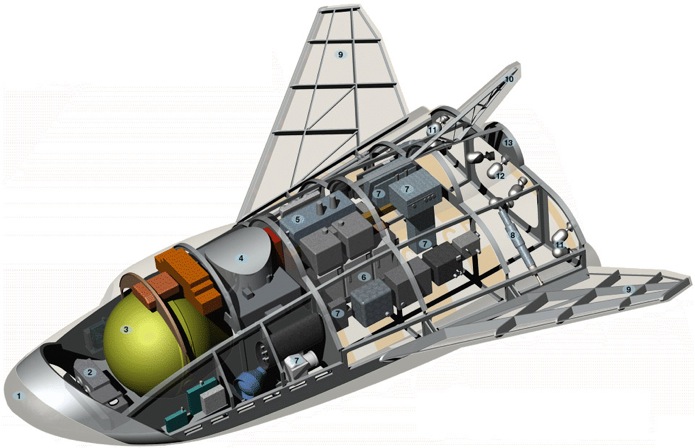bimmer4011":26raoxdc said:
I think NASA is best suited to spend it`s budget on solar system exploration and extrasolar exploration. If they need to geto to LOE then they should use the tried and true rocket and payload. Nothing fancy like an expensive reusable `spaceplane` that is proven not to be cost effective. Why not split the difference and have a partially reusable launch vehicle, just recycle early stage engines, and recover them in the ocean like the current shuttle.
We used to have a pretty reliable launch vehicle that was cheaper than the shuttle, lets get back to basics for our workhorse vehicles. The Russians have proven the `KISS` is an effective approach to achieve LOE. Expanding on that principal with a heavey lifter will take us further out as needed.
If a simple rocket+payload+capsule is used, you could then have a relatively easy and effective capsule separation system for the crew to use should they need to separate from the main launch vehicle.
I can`t imagine it`s cheaper,, nnor easier to hang several tons from a B52 and launch into LOE, let alone putting it on a rocket sled that goes up the side of a mountain (made by ACME?).
Notice that all new comers to space (China, Japan, Europe) all use Rockets as their launch vehicle? KISS.... the concept is not rocket science, just the technology. ;o)
- Ron
That kind of logic would have prevented the airplane companies from switching airliners from reciprocating engines to turbine engines, even though the turbine engine is much more simple than a reciprocating engine.
We are at the very infancy of space exploration, and the only method of reaching space used to be a capsule on top of a step rocket. We have learned enough to move beyond this primitive technique, and on to a more advanced system which ultimately will reduce the cost of transferring people to orbit and back.
Just because the space shuttle has never proven to be a cost-effective method of transportation does not mean that the concept of a reusable space craft is unworkable. The space shuttle was a huge, complicated, compromise, bearing little resemblance to what the original concept was. What is amazing is that it has worked as well as it has. The only reason that it is being retired is that Congress has been unwilling to give NASA any additional money to develop a successor.
I too, am interested in science, and I love to see the pictures that have come back from our probes. But that knowledge has yet to alter my everyday life, to have any impact on the world. If space exploration is going to continue, if we are ever to be able to capitalize upon the knowledge that we are learning from our robot probes, than space is going to have to pay for itself somehow. The National Aeronautics and Space Administration was not created to study the outer planets of the Solar System, or other star systems, it was created to help American companies to move into space, just as its predecessor had helped American aviation companies develop more advanced aircraft.
The greatest challenge we face in space exploration is simply getting into space. Once we are there, things are much easier. I am not advocating launching a spacecraft up a mountain, or on a B-52. What I believe will be the future method of transporting people to orbit is a spacecraft which is carried to altitude by a specially designed aircraft, a carrier wing, which is launched by a horizontal catapult which not only accelerates the vehicle to around 350 miles per hour, but also supports the several million pounds of carrier wing and spacecraft.
People are going to be needed to make space pay, people on the spot, people with the ability to fix things, to modify them, and to rebuild them into something that will work. Getting those people back and forth across that 5 mile per second barrier is the greatest challenge the human race has ever faced. With the space shuttle, we took a giant step forward in technology, creating a space vehicle which could land on a runway at the place where it would take off again. We discovered that it is possible to send many people back and forth at once, instead of just a few at a time. We discovered that we could do this without putting the people through extreme accelerations, which had demanded top conditioning to deal with when flying in capsules.
The flip side of this proposal is the development of a very large Heavy Lift Launch Vehicle, one capable of a minimum payload to Low Earth Orbit of 100 metric tons, scalable to 150 tons, with a payload diameter of at least 10 meters. This vehicle should be designed with a minimum number of units to be produced, preferably more than 50, so that the unit costs will not be unreasonably high. These vehicles should be built assembly line fashion, at a rate which increases over a span of 10 years, plateaus, and then declines after 25 years.
Space stations, Lunar exploration gear, Lunar base materials, earth moving equipment, capacitors, batteries, cable, ice hauling equipment, a linear motor to launch payloads without chemical propellants, components for a deep space exploration vehicle, and several Orbital Transfer Vehicles comprise an initial list of payloads. But this launch vehicle should never be threatened with being man-rated. That would jack the price way up, increase launch costs significantly, and put passengers in far more danger than they need to face. By transporting people in a vehicle designed exclusively for that, and launching cargo on a vehicle designed exclusively for that, we can keep launch costs to a minimum, while enhancing safety and versatility.





